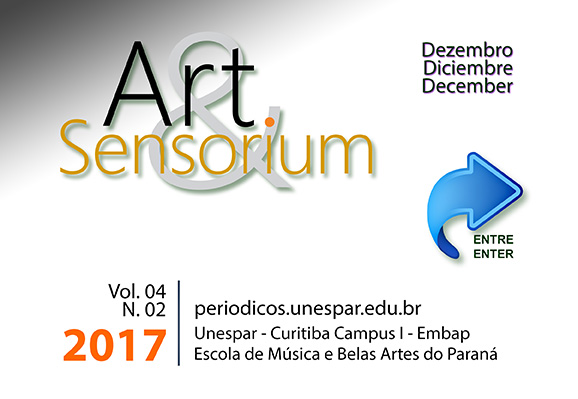A CIDADE DOS MORTOS: O MUNDO IMAGINÁRIO DO ARTISTA POLONÊS ZDZISLAW BEKSINSKI
DOI:
https://doi.org/10.33871/23580437.2017.4.2.031-045Keywords:
Artes Visuais, Literatura, Interdisciplinaridade, Surrealismo polonêsAbstract
O artista polonês Zdzislaw Beksinski (1929-2005) ficou conhecido como o artista que "fotografava sonhos" . Suas obras costumam ser associadas ao Surrealismo ou Realismo Fantástico, sendo o grotesco a categoria estética preferida desse artista. Elencamos algumas pinturas onde ele retratou a cidade e buscamos aproximações com textos literários, por meio da montagem, tendo por base a noção de que a imagem é um vestígio, assim como uma impressão da memória e da imaginação e, portanto, sua compreensão sempre será lacunar e anacrônica (Didi-Huberman, 2012). Observamos que muitas obras desse artista dialogavam com as descrições das Cidades Invisíveis de Ítalo Calvino (1923-1985), principalmente quando este descreve a cidade e os mortos; com alguns contos macabros de Edgar Alan Poe (1809-1849) e com as descrições da vida além-túmulo de Dante Alighieri (1265-1321) na Divina Comédia.
Downloads
Downloads
Published
Issue
Section
License
Copyright (c) 2022 International Interdisciplinary Journal of Visual Arts - Art&Sensorium

This work is licensed under a Creative Commons Attribution 3.0 Unported License.
Authors who publish with this journal agree to the following terms:- Authors retain copyright and grant the journal right of first publication with the work simultaneously licensed under a Creative Commons Attribution License that allows others to share the work with an acknowledgement of the work's authorship and initial publication in this journal.
- Authors are able to enter into separate, additional contractual arrangements for the non-exclusive distribution of the journal's published version of the work (e.g., post it to an institutional repository or publish it in a book), with an acknowledgement of its initial publication in this journal.
- Authors are permitted and encouraged to post their work online (e.g., in institutional repositories or on their website) prior to and during the submission process, as it can lead to productive exchanges, as well as earlier and greater citation of published work (See The Effect of Open Access).


